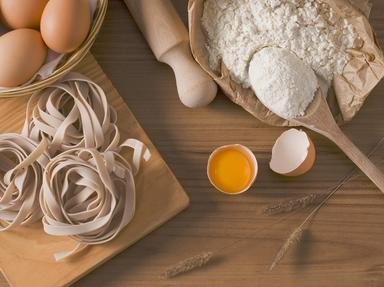Quiz Answer Key and Fun Facts
1. Dry toast cut into long pieces to be dipped in soup or other liquid
2. Heated serving table or vessel containing hot water in which saucepans or serving dishes are stood to keep warm
3. Beverage served with milk
4. To work a flour mixture by hand or machine until a smooth dough is formed
5. Uniform mixture of lean meat with fat made by grinding or sieving the ingredients, used as a stuffing
6. Long thin strip of food
7. Reheated cooked food
8. To allow food or leaves to stand in a liquid to extract or infuse with flavour
9. Small containers which hold salt, pepper, mustard and sometimes vinegar which are placed on the dining table
10. To cut narrow strips in the surface of food before cooking
Source: Author
VegemiteKid
This quiz was reviewed by FunTrivia editor
Bruyere before going online.
Any errors found in FunTrivia content are routinely corrected through our feedback system.
